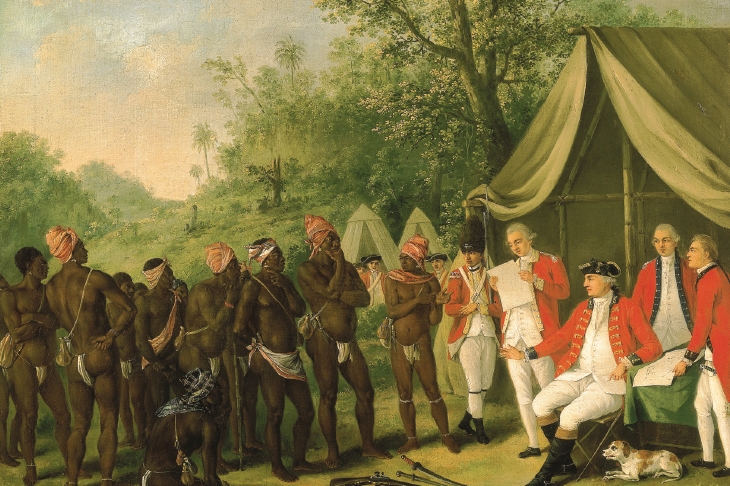Much romantic nonsense has been written about the runaway slaves or Maroons of the West Indies. In 1970s Jamaica, during President Michael Manley’s socialist experiment, Maroons were hailed as forerunners of Black Power. Rastafari militants and back-to-Africa ideologues saw a nobility in Maroon descent. The Jamaican black nationalist Marcus Garvey had claimed Maroon ancestry for himself; as has, more recently, the British Jamaican hip-hop singer Ms Dynamite (whose debut album, A Little Deeper, remains a UK drum and bass masterwork).
In Jamaica, at any rate, Maroons fought exclusively for their own liberty, not for the overall liberty of the island’s enslaved Africans. As a condition of their freedom (and in return for land and other privileges), they were obliged to return other fugitive slaves to the imperial British and even help put down slave revolts. The Maroons of Jamaica thus inherited an ambivalent legacy: they are both heroes of, and traitors to, black freedom. Their most famous leader, an African tribeswoman known as Nanny, was said to have been able to fend off British Redcoats by catching bullets in the cleft of her buttocks. (It is more likely that Nanny simply lifted her skirts to moon at the troops — a gesture of extreme contempt signifying ‘batty man’ or homosexual.)
The word ‘Maroon’ probably derives from the Spanish cimarrón, meaning ‘wild’, originally applied to the interior of Hispaniola — present-day Haiti. Maroons have long existed throughout the Caribbean. The mountains and waterfalls of British Dominica provided them with an ideal refuge; in their geographic isolation they were able to conserve a unique subculture of African slave language, music, divination and spirit animism.
According to the Dominica-born historian and anthropologist Lennox Hony-church, the Maroons’ African lore was fortified by exposure to the island’s pre-Columbian Kalinago Amerindian peoples, who had used their knowledge of the volcanic massifs and wild jungle to wage guerrilla sorties on the Spanish, French and British in the 16th and 17th centuries.
In his lively history of Dominica Marronage, Honychurch chronicles the island’s Maroon Wars of 1785 to 1814. Runaway slave chiefs such as Jacko, Balla, Elephant and the Nanny-esque Angelique and Calypso significantly menaced the British plantation system. They laid pit-traps concealed by branches and hid out in ‘back-o-water’ caves alongside Kalinago co-conspirators. The eerie wail of the conch shell, used by the Maroons to communicate over distances, warned the British that a marauding party was on its way to harry the sugar plantations and their owners.
During Dominica’s first Maroon War of 1785–1786 the runaways were easily outnumbered as the Redcoats infiltrated their scout networks and used Kalinago double agents.
Some 150 Maroons were killed in the course of the short-lived conflict and their chief, Balla, was captured and hanged in Dominica’s capital of Roseau. Betrayal was a constant danger and even today in Dominica the few surviving Maroon communities remain suspicious of outsiders. Only with emancipation in 1838 were they able finally to glimpse their own freedom.
As well as a valuable history of Afro-Atlantic slave custom and revolt, In the Forests of Freedom celebrates the beauty of rural Dominica, with its glittering palm groves and rivers dashing white over rocks. In Honychurch’s estimation, the ‘spirit of the Maroons’ continues today in Rastafari and other pan-African religions, which display a Maroon-like cussedness and defiant New World blackness. Privately published by the author in 2014 (and reissued now by Polly Patullo of the excellent Papillote Press), In the Forests of Freedom opens a window onto a little-known West Indian history.






Comments